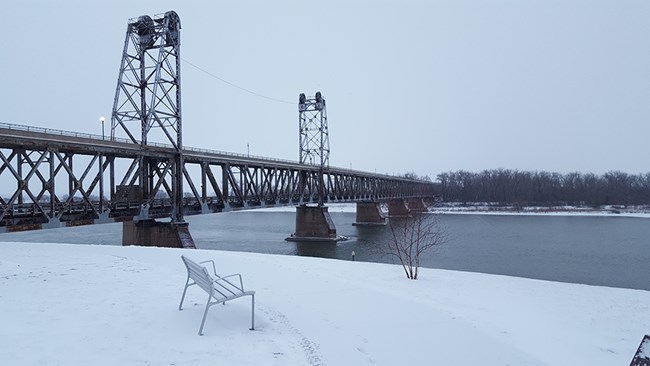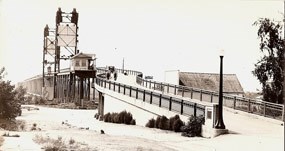
NPS Yankton's Signature Landmark Bridge Boosterism The bridge boosters also supported the bridge as an improvement to the Meridian Highway. Indeed, the bridge company used the Meridian Highway in its name in order to elevate the bridge project above a local character even though the company had no official organizational connection with the highway. Established around 1911, the Meridian Highway traversed the Great Plains in a north-south direction and derived its name from the Sixth Principal Meridian, which it roughly paralleled. The Final Toll 
Yankton Press & Dakotan The bridge was built with a double deck in anticipation that the lower deck would be made available to a railroad, but the line never materialized. The double decking speaks to the optimism of the bridge company founders that they could attract a north-south rail line to Yankton. By the 1920s, however, the great era of railroad construction was over; many railroads were already contemplating abandoning unprofitable lines and consolidating parallel, competing lines. The Meridian Highway Bridge Company agreed to sell the bridge to the City of Yankton in 1946 for $700,000. In 1953 after recouping the cost of the bridge through toll collection, the bridge was turned into a free facility and shortly thereafter taken over by the State of South Dakota. At the same time, the lower level which never materialized into a train route was converted to carry vehicular traffic, allowing one-way traffic on each of the two levels. An Engineering Marvel The bridge has undergone several rehabilitation projects including the construction of new approach spans, deck modifications and several structural steel repairs within its 76-year life. The most significant alteration to the bridge occurred in 1983 when the lift span ceased to be movable and the operating machinery, operator's house that was cantilevered off the northeast quadrant, and counterweights and cables were removed. The towers remain, defining what was the vertical lift span. The decorative iron railings were replaced with concrete barricades. The bridge retains its original configuration and is today distinguished as the only vertical lift span in Nebraska and South Dakota. The bridge was listed on the National Register of Historic Places in May 1993. Converted & Opened For Recreational Use Bridges of the Missouri National Recreational River
Additional Resources |
Last updated: April 21, 2020
